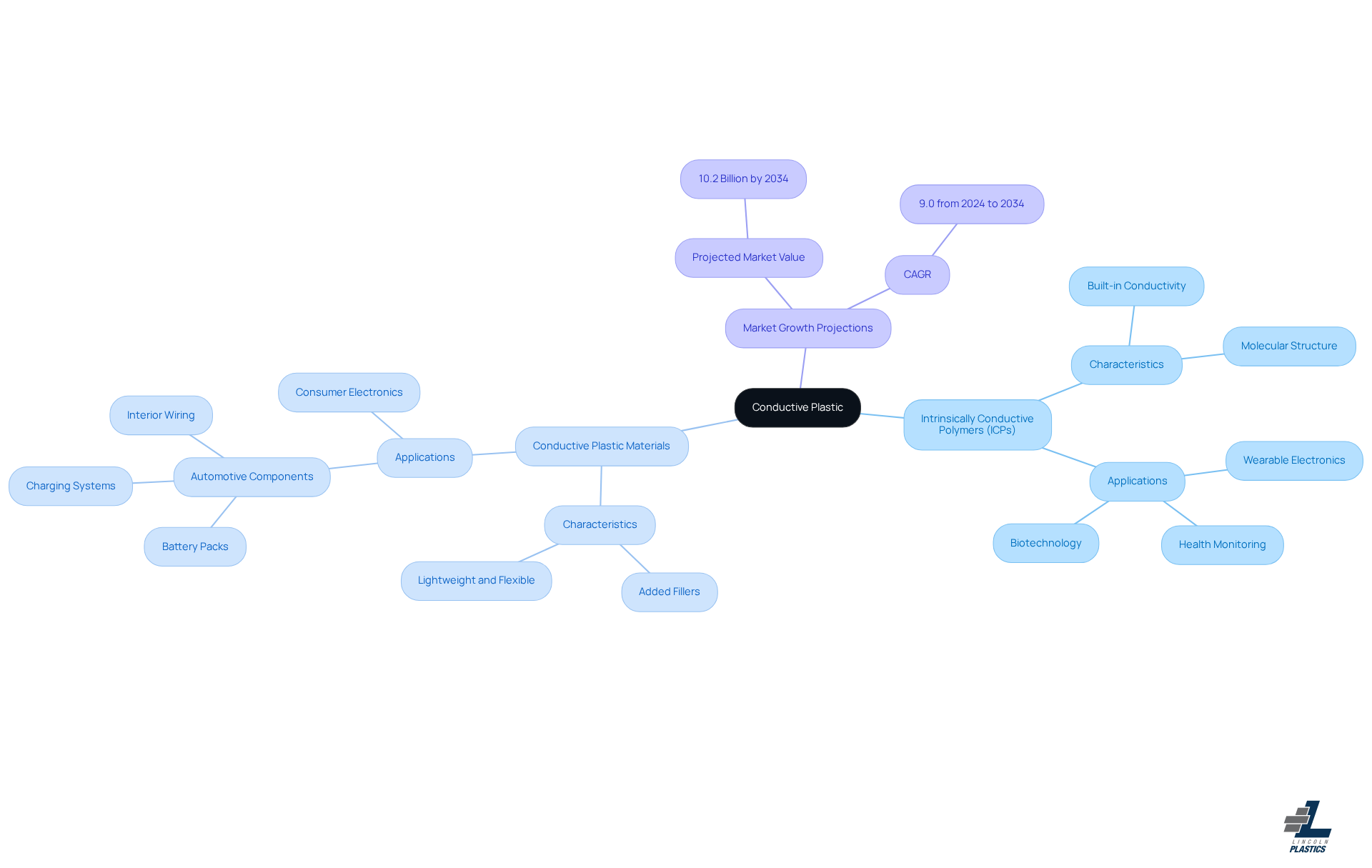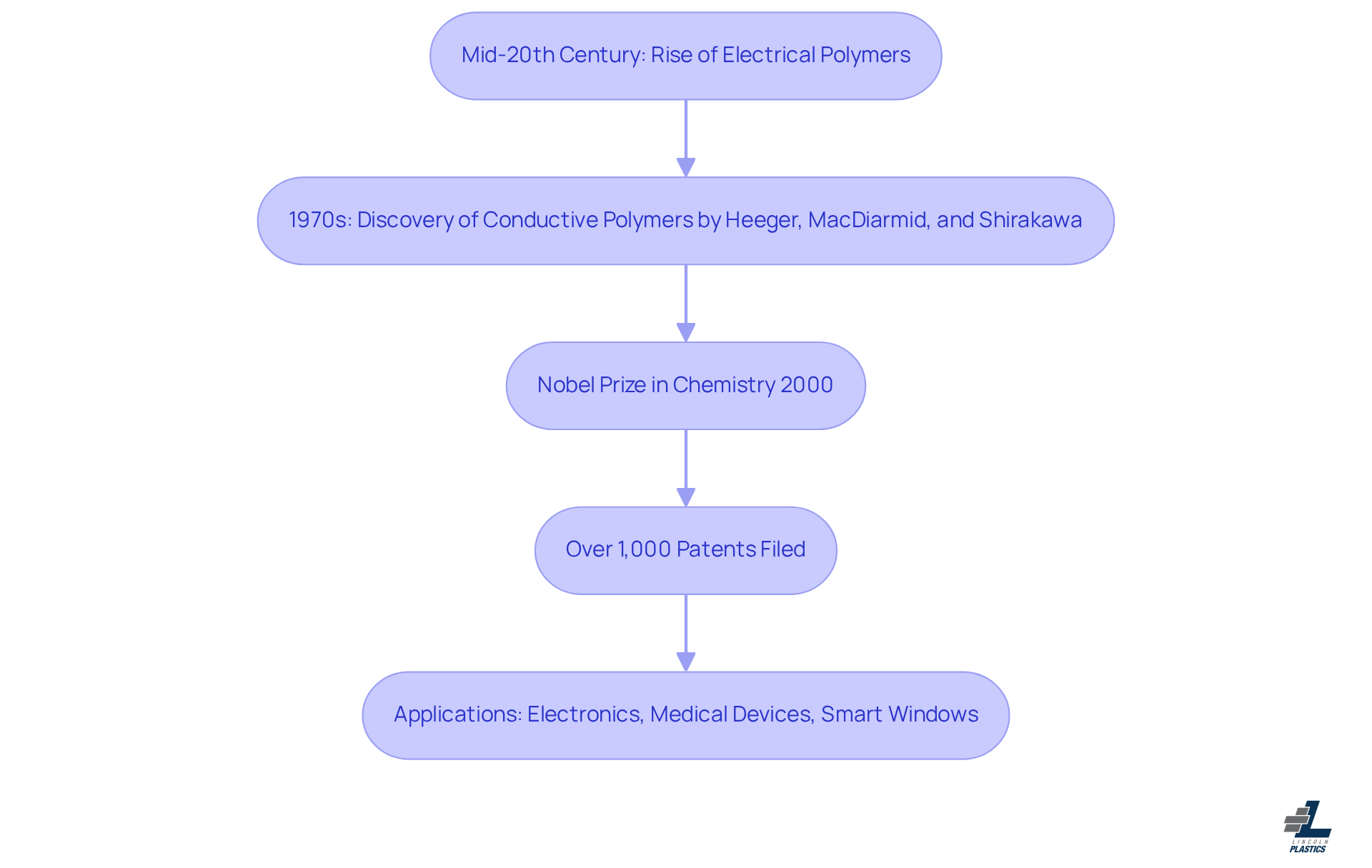
Understanding Conductive Plastic: Definition, History, and Uses
Introduction
Have you ever thought about how materials can change the way we interact with technology? Conductive plastics are a fascinating blend of materials science and electrical engineering, allowing us to create lightweight, flexible components that can actually transmit electricity. In this article, we’re going to explore what conductive plastics are all about, how they’ve evolved over time, and the many ways they’re being used today, especially in the electronics and automotive industries.
But here’s the thing: as the demand for these innovative materials grows, we need to ask ourselves - what challenges are we facing in their production and integration? And how could these materials reshape the future of technology? Let’s dive in and find out!
Defining Conductive Plastic: Composition and Significance
Have you ever thought about how materials can be designed to conduct electricity? Well, these specialized substances are created using conductive plastic additives, such as carbon black or metal fibers, to achieve just the right levels of electrical conductivity. They fall into two main categories:
- Intrinsically conductive polymers (ICPs), which have built-in conductivity thanks to their molecular structure.
- Conductive plastic materials, which gain their conductivity from added fillers.
This unique combination allows these materials to blend the lightweight and flexible characteristics of traditional substances with the electrical conductivity typically found in conductive plastic. Pretty cool, right? This makes them perfect for a wide range of applications across various industries.
Now, let’s talk about the electronics industry and its use of conductive plastic. Here, conductive plastic materials are essential for ensuring reliable electrical connections in devices, which is key for advancements in consumer electronics and the Internet of Things (IoT). Their lightweight and flexible nature is especially beneficial in automotive applications. You might have noticed them popping up in components like battery packs, charging systems, and even interior wiring. The market for electrically active polymer compounds is set to grow significantly, with projections suggesting it could reach 10.2 billion by 2034, growing at a CAGR of 9.0% from 2024 to 2034. This growth is driven by the demand for lightweight and durable materials in cutting-edge devices.
Experts in materials science emphasize how important the composition of these polymers is. For example, Joost Kimpel points out that using safe ingredients in their production not only boosts safety and compatibility with human tissues but also makes recycling easier. This aligns perfectly with the increasing focus on sustainability in manufacturing. As researchers highlight, moving from traditional metals to conductive plastic materials brings a host of benefits, like reduced weight, enhanced flexibility, and lower manufacturing costs. These factors are essential in the ever-evolving landscape of electronics and automotive design.

Historical Context: The Evolution of Conductive Plastics
The journey of electrical polymers really took off in the mid-20th century. You might be surprised to learn that it was in the 1970s when researchers like Alan Heeger, Alan MacDiarmid, and Hideki Shirakawa made a groundbreaking discovery: certain polymers could actually transmit electricity! Their work on polyacetylene was so significant that it earned them the Nobel Prize in Chemistry in 2000. Can you imagine? They shared a prize of SEK 9 million, which really highlights just how important their contributions were.
Since then, the field has exploded! Over 1,000 patents have been filed for materials that conduct electricity, showing just how much interest and innovation there is in this area. These advancements have led to the creation of various polymers and composites, including conductive plastic. You’ll find these materials popping up in all sorts of applications, from electronics and medical devices to anti-static substances for photographic film and shields for computer screens against electromagnetic radiation. And let’s not forget about those 'smart' windows!
The development of conductive plastic reflects a growing understanding of polymer chemistry and a response to our need for lightweight, efficient materials in today’s tech-driven world. Richard Friend from the University of Cambridge even pointed out, 'No one had truly considered' the potential of these substances before their discovery. Isn’t it fascinating how this research has transformed our approach to materials science?

Key Characteristics of Conductive Plastics: Properties and Applications
Conductive plastic is quite fascinating, isn't it? They come with some essential characteristics that really boost their usefulness in all sorts of applications.
-
Electrical Conductivity is a big one. These materials can show a range of conductivity levels, from antistatic to super conductive, depending on how much conductive plastic filler you use. For instance, if you mix in about 30% carbon fiber, you can hit a conductivity of 40.933 S/m! And guess what? Percolation kicks in at around 10% carbon fiber, making conductive plastic ideal for situations where you need to manage static or conduct electrical signals efficiently.
-
Now, let’s talk about Flexibility and Lightweight. Unlike traditional metals, conductive plastic is lighter and can be shaped into all sorts of intricate designs. This flexibility is a game-changer in industries like aerospace, consumer electronics, and automotive manufacturing, where keeping things light and complex is key.
-
Another cool feature of the product is its conductive plastic's corrosion resistance. Conductive polymers usually resist corrosion better than metals, which means they last longer, especially in wet or chemical-heavy environments. This is super important for keeping things running smoothly in tough conditions.
-
And don’t forget about Processability! These materials can be easily processed using standard manufacturing methods like injection molding and twin-screw extrusion. This makes production cost-effective while still hitting high-quality standards.
With all these traits, it’s no wonder conductive plastic is perfect for a variety of uses, like touchscreens, sensors, and components in medical devices that need to protect against electrostatic discharge. Industry experts are excited about how integrating electrical conductivity into lightweight and flexible materials opens up new possibilities for innovation across different fields. So, what do you think? Ready to explore how these materials can work for you?

Applications of Conductive Plastics: Real-World Examples and Benefits
Have you ever thought about how conductive polymers are popping up in so many different industries? They’re pretty amazing, showcasing their versatility and effectiveness in a variety of applications. Let’s dive into some cool examples:
- Electronics: You’ll find conductive plastics in flexible circuits, touchscreens, and connectors. They offer lightweight and cost-effective solutions for all sorts of electronic devices.
- Medical Devices: In the medical world, these materials are crucial. They’re used in catheters and sensors, where conducting electricity is key for functionality and safety.
- Automotive: Ever heard of electromagnetic interference (EMI) shielding? Conductive plastic polymers are making waves in automotive applications, boosting the performance and reliability of electronic systems.
- Packaging: And don’t forget about packaging! Conductive plastic helps protect delicate electronic components from static discharge during transport and handling.
So, why are conductive plastics such a big deal? Well, they come with some fantastic benefits: reduced weight, lower production costs, and enhanced design flexibility. It’s no wonder they’re becoming a go-to choice in many modern applications. What do you think? Could these materials be the answer to some of the challenges you face?

Conclusion
Conductive plastics are pretty amazing, right? They blend lightweight flexibility with electrical conductivity, shaking things up across various industries. These materials, made through some really innovative methods, not only boost the performance of electronic devices but also play a big role in automotive, medical, and packaging sectors. It’s fascinating to think that the evolution of conductive plastics started with groundbreaking research back in the 1970s, highlighting just how important they are in our tech-driven world today.
Now, let’s talk about the two sides of conductive plastics. We can distinguish between intrinsically conductive polymers and those that become conductive thanks to additives. Key features like electrical conductivity, flexibility, corrosion resistance, and processability really show off their versatility and practicality in real-world applications. Whether it’s improving the reliability of electronic connections or helping develop medical devices, conductive plastics are set for some serious growth, with market projections showing a big increase in demand.
Ultimately, the journey of conductive plastics is a testament to human creativity and the quest for sustainable manufacturing solutions. As industries keep looking for lightweight, efficient materials, diving into conductive plastics will surely lead to exciting new applications and technologies. Embracing these materials not only tackles current challenges but also opens up a world of future possibilities, making them a key focus in material science and engineering. So, what do you think? Isn’t it time we pay more attention to these innovative materials?
Frequently Asked Questions
What is conductive plastic?
Conductive plastic is a specialized material designed to conduct electricity, created using additives like carbon black or metal fibers to achieve specific levels of electrical conductivity.
What are the two main categories of conductive plastic?
The two main categories are intrinsically conductive polymers (ICPs), which have built-in conductivity due to their molecular structure, and conductive plastic materials, which gain conductivity from added fillers.
Why are conductive plastics significant in the electronics industry?
Conductive plastics are essential for ensuring reliable electrical connections in devices, which is crucial for advancements in consumer electronics and the Internet of Things (IoT).
Where are conductive plastics commonly used in automotive applications?
Conductive plastics are used in components such as battery packs, charging systems, and interior wiring due to their lightweight and flexible nature.
What is the projected market growth for electrically active polymer compounds?
The market for electrically active polymer compounds is projected to reach 10.2 billion by 2034, growing at a compound annual growth rate (CAGR) of 9.0% from 2024 to 2034.
What factors are driving the growth of conductive plastics?
The growth is driven by the demand for lightweight and durable materials in cutting-edge devices, as well as the benefits of reduced weight, enhanced flexibility, and lower manufacturing costs.
How does the composition of conductive plastics impact safety and sustainability?
Using safe ingredients in the production of conductive plastics enhances safety and compatibility with human tissues, making recycling easier and aligning with the increasing focus on sustainability in manufacturing.
List of Sources
- Defining Conductive Plastic: Composition and Significance
- United States Black Electrically Conductive Plastic Compounds Market Latest News (https://linkedin.com/pulse/united-states-black-electrically-conductive-0nrwe)
- Electrically Conductive Plastic Compound (Carbon Black Based) Market to Surge to US$ 10.2 Billion by 2034, Revolutionizing Industries with High-Performance Solutions | Transparency Market Research (https://globenewswire.com/news-release/2025/01/21/3012690/32656/en/Electrically-Conductive-Plastic-Compound-Carbon-Black-Based-Market-to-Surge-to-US-10-2-Billion-by-2034-Revolutionizing-Industries-with-High-Performance-Solutions-Transparency-Marke.html)
- Pioneering recipe for conductive plastics paves way for human bodies to go online (https://techxplore.com/news/2025-09-recipe-plastics-paves-human-bodies.html)
- Pioneering recipe for conductive plastics – paves the way for your body to go online (https://chalmers.se/en/current/news/k-pioneering-recipe-for-conductive-plastics-paves-the-way-for-your-body-to-go-online)
- Electrically Conductive Plastic Compound (Carbon Black Based) Market to Surge to US$ 10.2 Billion by 2034, Revolutionizing Industries with High-Performance Solutions | Transparency Market Research (https://finance.yahoo.com/news/electrically-conductive-plastic-compound-carbon-133000202.html)
- Historical Context: The Evolution of Conductive Plastics
- Nobel Prize in Chemistry 2000 (https://nobelprize.org/prizes/chemistry/2000/summary)
- Nobel Focus: Electricity through Plastic (https://physics.aps.org/story/v6/st18)
- Nobel Prize in Chemistry 2000 (https://nobelprize.org/prizes/chemistry/2000/press-release)
- Key Characteristics of Conductive Plastics: Properties and Applications
- Pioneering recipe for conductive plastics – paves the way for your body to go online (https://chalmers.se/en/current/news/k-pioneering-recipe-for-conductive-plastics-paves-the-way-for-your-body-to-go-online)
- Mouldable Conductive Plastic with Optimised Mechanical Properties - PMC (https://pmc.ncbi.nlm.nih.gov/articles/PMC10856916)
- Pioneering recipe for conductive plastics – paves the way for your body to go online (https://eurekalert.org/news-releases/1098693)
- Jamcor Corporation | Exploring the Realm of Electrically Conductive Plastics (https://jamcorcorp.com/news-and-views/exploring-the-realm-of-electrically-conductive-plastics.php)
- Pioneering method creates wearable, conductive plastics (https://digitaljournal.com/tech-science/pioneering-method-creates-wearable-conductive-plastics/article)
- Applications of Conductive Plastics: Real-World Examples and Benefits
- Automotive plastics for innovation and sustainability | OEM Update (https://oemupdate.com/automotive/automotive-plastics-for-innovation-and-sustainability)
- Conductive Plastics Market to Reach USD 7.0 Billion by 2035, Driven by Demand for Lightweight and High-Performance Materials (https://openpr.com/news/4254676/conductive-plastics-market-to-reach-usd-7-0-billion-by-2035)
- Pioneering recipe for conductive plastics paves way for human bodies to go online (https://techxplore.com/news/2025-09-recipe-plastics-paves-human-bodies.html)
- Premix Transforms its Conductive Polymer Manufacturing with AI and Automation (https://premixgroup.com/premix-news/premix-transforms-its-conductive-polymer-manufacturing-with-ai-and-automation)


